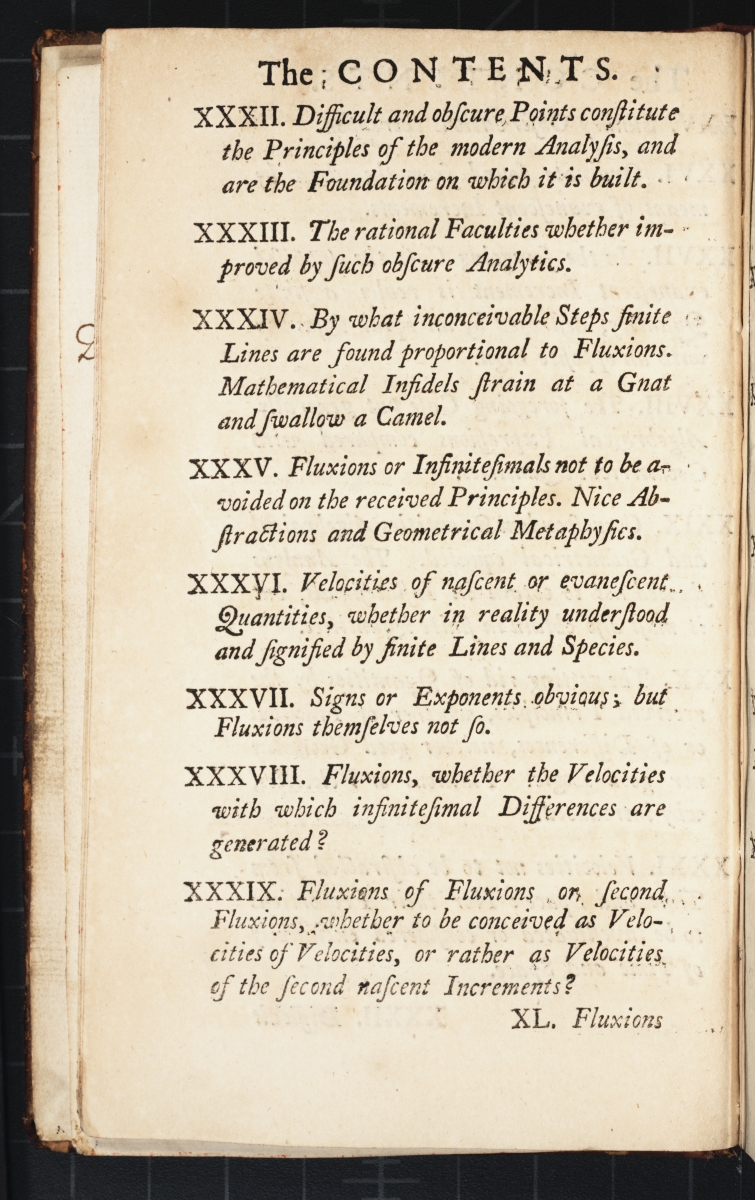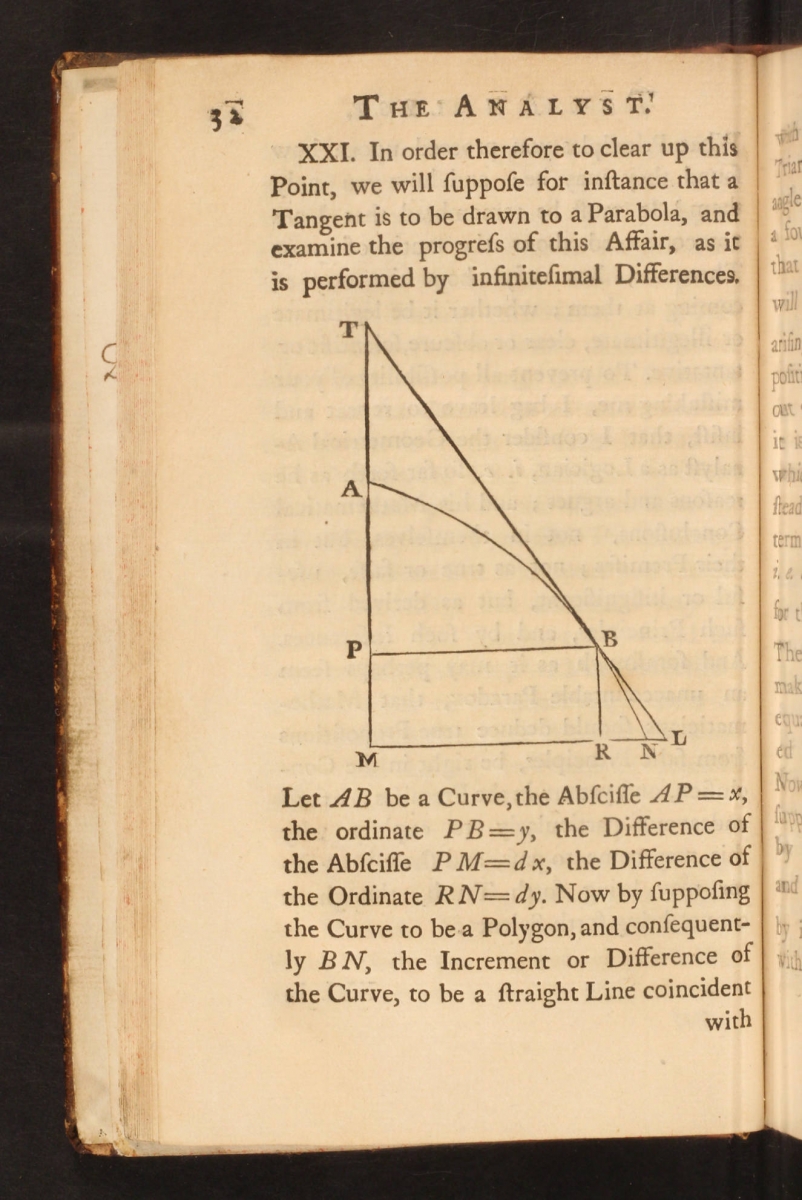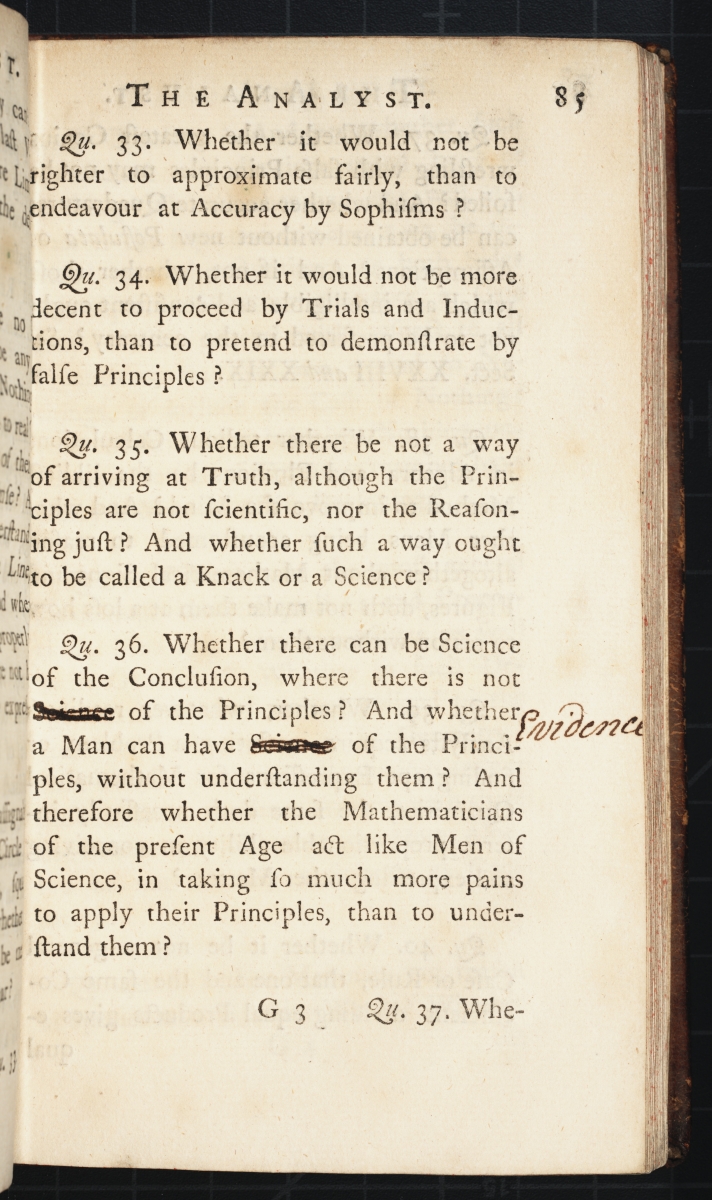- About MAA
- Membership
- MAA Publications
- Periodicals
- Blogs
- MAA Book Series
- MAA Press (an imprint of the AMS)
- MAA Notes
- MAA Reviews
- Mathematical Communication
- Information for Libraries
- Author Resources
- Advertise with MAA
- Meetings
- Competitions
- Programs
- Communities
- MAA Sections
- SIGMAA
- MAA Connect
- Students
- MAA Awards
- Awards Booklets
- Writing Awards
- Teaching Awards
- Service Awards
- Research Awards
- Lecture Awards
- Putnam Competition Individual and Team Winners
- D. E. Shaw Group AMC 8 Awards & Certificates
- Maryam Mirzakhani AMC 10 A Awards & Certificates
- Two Sigma AMC 10 B Awards & Certificates
- Jane Street AMC 12 A Awards & Certificates
- Akamai AMC 12 B Awards & Certificates
- High School Teachers
- News
You are here
Mathematical Treasure: George Berkeley's The Analyst
The following image is the title page of The Analyst; or a Discourse Addressed to an Infidel Mathematician by Bishop George Berkeley. This work was published in 1734, the same year that Berkeley was appointed the Bishop of Cloyne in Ireland.

Bishop Berkeley is known for his attacks on Newton’s calculus, and The Analyst was the first of several publications containing his arguments that the calculus had weak foundations. These arguments helped instigate work on making the foundations more rigorous by others such as Colin Maclaurin and the Bernoullis.
The image below shows a page from the table of contents of The Analyst. Notice the title of Chapter 34–By what inconceivable Steps finite Lines are found proportional to Fluxions. Mathematical Infidels strain at a Gnat and swallow a Camel.

It is in Chapter 34 that Berkeley’s well-known quote about fluxions being “ghosts of departed quantities” can be found.

This page shows the dot notation being used for the derivative.

On page 32, meanwhile, we see the differential notation being used.

Below are two more pages from The Analyst.


The copy of the book at the Linda Hall Library may have been owned by Thomas Clarke, Esquire, of Knedlington, a small hamlet of East Riding, Yorkshire, England. He was a member of the Camden Society, which published new editions of rare or unpublished works.

Two other works are bound with this copy of The Analyst:
- Geometry no friend to infidelity : or, A defence of Sir Isaac Newton and the British mathematicians, in a letter to the author of The analyst ... by Philalethes Cantabrigiensis (a pseudonym for James Jurin), London, 1734.
- A panegyric upon Sir Isaac Newton / translated from the French, pronounced by Mr. Fontenelle before the Royal Academy of Sciences at Paris, by Andrew Reade, with remarks by James Wilson, London, 1728.
Images of a later edition of Bishop George Berkeley’s The Analyst are also available in Convergence.
A complete digital scan of The Analyst is available in the Linda Hall Library Digital Collections. The call number is QA35 .B47 1734.
Images in this article are courtesy of the Linda Hall Library of Science, Engineering & Technology and used with permission. The Linda Hall Library makes available all existing digital images from its collection that are in the public domain to be used for any purpose under the terms of a Creative Commons License CC by 4.0. The Library’s preferred credit line for all use is: “Courtesy of The Linda Hall Library of Science, Engineering & Technology.”
Cynthia J. Huffman (Pittsburg State University), "Mathematical Treasure: George Berkeley's The Analyst," Convergence (July 2017)




